- What is Swine Influenza (Swine Flu; H1N1 Influenza A)?
- Statistics
- Risk Factors
- Progression
- Symptoms
- Clinical Examination
- How is it Diagnosed
- Treatment
- References
What is Swine Influenza (Swine Flu; H1N1 Influenza A)?
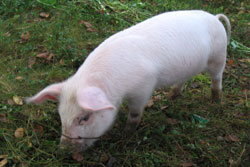
Statistics
People most likely to become infected with regular strains of swine flu are those persons with direct exposure to infected pigs, including workers of the swine industry and other persons in close proximity to infected pigs. However, there is no evidence as yet to suggest pigs in the United States and other areas with confirmed cases are infected with this new virus. Furthermore many human cases, including the original cases described, have had no swine exposure.
Like other influenza viruses, it is believed that this virus spreads mainly from person to person through coughing or sneezing by people infected with the virus. The virus may also be spread if people come into contact with objects containing the flu virus and then use unwashed hands to touch their mouth or nose. Hence those as greatest risk would be those with greatest geographic proximity to or with close contact to confirmed cases.
It is important to note that you cannot become infected with this new virus by consuming pork or pork products. The H1N1 viruses are not transmitted by food and hence eating properly handled and cooked pork is safe.
As of April 30 2009, cases of the newly described H1N1 influenza A virus have been confirmed in Austria (1 confirmed case), Canada (19), Germany (3), Israel (2), Mexico (97 cases, 7 deaths), Netherlands (1), New Zealand (3), Spain (13), Switzerland (1), United Kingdom (8) and the United States (109 cases, 1 death). Those affected include adults and children.
As of May 29 2009, cases have been confirmed in Argentina (37 confirmed cases), Australia (147), Austria (1), Bahrain (1), Belgium (8), Brazil (10), Canada (1,118 cases, 2 deaths), Chile (165), China (30), Colombia (17), Costa Rica (33 cases, 1 death), Cuba (4), Czech Republic(1), Denmark (1), Dominican Republic (1), Ecuador (32), El Salvador (11), Finland (3), France (21), Germany (19), Greece (3), Guatemala (5), Honduras (1), Iceland (1), India (1), Ireland (3), Israel (11), Italy (26), Japan (364), Korea (33), Kuwait (18), Malaysia (2), Mexico (4,910 cases, 85 deaths), Netherlands (3), New Zealand (9), Norway (4), Panama (107), Peru (31), Philippines (6), Poland (4), Portugal (1), Romania (3), Russia (2), Singapore (4), Slovakia (1), Spain (143), Sweden (4), Switzerland (4), United Kingdom (203), United States (7,927 cases, 11 deaths), and Uruguay (2).
As of 4 October 2009, there have been over 375,000 laboratory confirmed cases of influenza H1N1, with more than 4,500 deaths reported. Many countries have now stopped counting individual cases, particularly if they are a milder illness, and so the count is significantly lower than the actual number of cases that have occurred. While temperate regions of the Northern Hemisphere are experiencing increasing rates of an influenza-like illness, influenza transmission has largely decreased in temperate regions of the Southern Hemisphere. Influenza transmission is persisting in the tropical regions of the Americas and Asia.
Symptoms
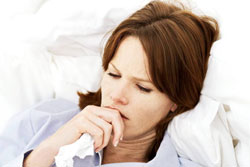
Symptoms typically include:
-
Fever
- Cough
- Sore throat
- Runny nose
- Body aches
- Headache
- Chills
- Fatigue
- Loss of appetite
- Vomiting
- Diarrhoea
Adults
Severe infection in adults may result in symptoms of:
- Difficulty breathing or shortness of breath
- Pressure or pain in the chest or abdomen
- Sudden onset dizziness
- Confusion
- Severe or persistent vomiting
These are emergency warning signs and should prompt urgent medical attention.
Children
Severe infection in children may result in symptoms of:
- Difficulty or fast breathing
- Bluish or grey coloured skin (cyanosis)
- Not drinking enough fluids or a noticeable reduction in urine output (dehydration)
- Difficulty waking and interacting (altered metal status)
- Extreme irritability eg doesn’t want to be held
- Fever with rash
These are emergency warning signs and should prompt urgent medical attention.
It is not yet known how severe the illness will be in the general population. However, like the seasonal flu, there may be groups of individuals who are more at risk for developing serious flu-related complications. These include pregnant women, young children, those with chronic medical conditions and those aged 65 and older.
Of the confirmed cases in the United States up until April 30 2009, most had a mild influenza-like illness with only five requiring hospitalisation and one death reported in a 23 month old infant. Of the cases confirmed in Mexico, seven deaths were reported.
Clinical Examination
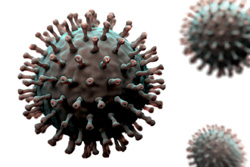 |
| Image courtesy of The Science Picture Company |
Your doctor will ask you about the presence of any of the abovementioned symptoms. They will also ask you about relevant history specific to the current outbreak. This would include recent travel and contact with patients with a febrile illness who were in an area with confirmed cases of H1N1 influenza A up to 7 days preceding the onset of their illness.
They will also take your temperature to see if it is elevated and examine your respiratory system to look for signs of infection.
How is it Diagnosed
Diagnosis is based on clinical evidence and several investigations. The Centres for Disease Control and Prevention (CDC) and the World Health Organisation (WHO) have slightly different criteria for diagnosing confirmed cases.
In any case, a person should present with an acute respiratory illness for which H1N1 influenza A virus can be confirmed as a cause. This is confirmed by several investigations including real time polymerase chain reaction and viral culture using specimens collected by your doctor.
The doctor may also order a test to see if there is any rise in the antibodies that your body normally produces to fight this infection.
Treatment
Medication
Treatment normally consists of antiviral medications prescribed by your doctor. There are four medications currently approved for the treatment of influenza virus however only two of these, oseltamivir (Tamiflu) and zanamivir (Relenza), have been shown to be effective against the new H1N1 influenza virus.
The drugs are Pregnancy category C medications but are not contraindicated for use in pregnancy. This means that while they can be used in pregnancy, they may be suspected of causing harmful effects on the human foetus or neonate without causing malformations. These effects may be reversible. Your doctor can advise you of the specific risks and benefits when using these medications in pregnancy.
It should be noted that these drugs only work against influenza viruses and will have no effect on treating or preventing symptoms in infections caused by other viruses.
You should check with your doctor for correct, safe use of medications.
Medication for children
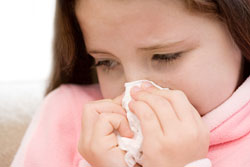
Children aged <4 years of age should not be given over the counter medication without first seeking advice from your doctor.
For those children aged <2 years the safest care involves the use of a cool-mist humidifier and a suction bulb to help clear away any mucous. Acetaminophen (Tylenol), ibuprofen (Advil) or non-steroidal anti-inflammatory drugs can be used to help alleviate fevers and aches.
Over the counter cold and flu medications may relieve cough or congestion however while these drugs may alleviate symptoms they do not lessen how infectious a person is. The other important point is to check packaging labels to ensure you are not double dosing on acetaminophen or ibuprofen which may already be incorporated in some medications.
Prevention
Vaccination
A new vaccine targeted against the H1N1 influenza virus, Panvax, was registered by the Therapeutic Goods Administration on 18 September 2009. Panvax is available for all Australians including children from six months of age with the new release of Panvax Junior. Vaccination is strongly recommended for:
- Pregnant women;
- Parents and guardians of infants up to six months of age;
- People with underlying chronic medical conditions;
- Those who are severely obese;
- Indigenous Australians;
- Frontline health care workers; and
- Community care workers.
The vaccine is available from 30 September 2009 and is available from your local GP, vaccination clinics, hospitals and health centres. While adults, adolescents and children aged ten or more recieve only a single dose, children aged between six months and ten years require two doses separated by a four week interval.
This vaccine contains inactivated components of the H1N1 influenza virus. The body makes antibodies against these proteins, which are important for prevention of natural infection. Panvax does NOT contain live virus and you cannot catch influenza from this vaccine. Clinical trials are still continuing, however, common side effects include injection site tenderness, pain, headache, muscle pain and malaise. These are of a mild to moderate intensity and self limiting. Immunisation should be postponed if you currently have a fever or an acute illness.
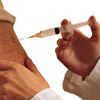 |
For more information, see Influenza Vaccination. |
Other
Other preventative and precautionary measures include:
- Travel precautions: while the CDC recommends avoiding nonessential travel to Mexico where there have been a large number of confirmed cases, the WHO is not recommending international travel restrictions.
- Chemoprophylaxis with antiviral medication: using oseltamivir or zanamivir is indicated for certain groups of individuals pre- or post-exposure at high risk for complications.
General precautions

- Wash your hands regularly for at least 15-20 seconds using either soap and warm water or an alcohol based hand gel.
- Try to stay in good health. It is important to get plenty of sleep, be physically active, manage your stress, drink plenty of fluids and eat nutritious food.
- Try to avoid surfaces which may be contaminated with the virus, e.g. objects that may have been sneezed or coughed on.
- Cover your nose and mouth with a tissue when coughing or sneezing and throw used tissues in the rubbish.
- Advise ill persons to stay home (except to seek medical care) and minimise contact with others in household.
Breastfeeding
If you are breastfeeding you should continue to breast feed as the passive transfer of antibodies against the virus may be protective for the infant. This is especially important for infants <6months of age. Breastmilk can be expressed if maternal illness is preventing breastfeeding. Infants affected by H1N1 influenza should also continue to breastfeed.
Social distancing measures
Follow public health advice regarding school closures, avoiding crowds and other social distancing measures. Social distancing measures recommended by the CDC include:
-
Individuals at high risk of complications may choose to avoid large gatherings or crowded settings. Alternatively a face mask could be worn especially in areas where transmission of H1N1 influenza has been confirmed.
-
Individuals with an influenza-like illness are encouraged to self-isolate within their own home for seven days following onset of illness or for at least 24 hours since resolution of symptoms, whichever is longer.
-
These individuals should also be encouraged to wear a face mask if required to go into the community eg for medical care. If a face mask is not available a handkerchief or tissue should be used to cover any coughing.
-
Caregivers and household contacts of a person with an influenza like illness should consider the use of a N95 respirator. If possible one person should be designated as caregiver taking appropriate precautions and self isolating if symptoms develop.
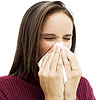 |
For more information, see Tips to Prevent Colds and Flus. |
More information
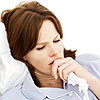 |
For more information on the common cold and influenza, types of influenza and treatments and tips for preventing influenza, see Cold and Flu. |
References
- Clinical Summary. (2009). Swine Influenza. Retrieved May 1, 2009, from DynaMed online database.
- Centres for Disease Control and Prevention. (2009). Key facts about swine influenza. Retrieved May 1, 2009, from http://www.cdc.gov/h1n1flu/key_facts.htm
- Centres for Disease Control and Prevention. (2009). H1N1 Flu (Swine Flue) and You. Retrieved May 1, 2009, from http://www.cdc.gov/h1n1flu/swineflu_you.htm
- Centres for Disease Control and Prevention. (2009). Interim Guidance for Clinicians on Identifying and Caring for Patients with Swine-origin Influenza A (H1N1) Virus Infection. Retrieved May 1, 2009, from http://www.cdc.gov/h1n1flu/identifyingpatients.htm
- Beigel J. Influenza. Critical Care Medicine. 2008; 36: 2660-2666.
- Spackman E. A brief introduction to the avian influenza virus. Methods Mol Biol 2008; 436: 1-6.
- Webby RJ, Webster RG, Richt JA. Influenza viruses in animal wildlife populations. Curr Top Microbiol Immunol 2007; 315: 67-83.
- Talley NJ. Clinical examination: a systematic guide to physical diagnosis 5th Ed. 2006. Elsevier Australia. Marrickville, NSW.
- Centres for Disease Control and Prevention. (2009). Interim Guidance on Specimen Collection, Processing, and Testing for Patients with Suspected Swine-Origin Influenza A (H1N1) Virus Infection. Retrieved May 1, 2009, from http://www.cdc.gov.h1n1flu/specimencollection.htm
- Centres for Disease Control and Prevention. (2009). Interim Guidance for H1N1 Flu (Swine Flu): Taking Care of a Sick Person in Your Home. Retrieved May 1, 2009, from http://www.cdc.gov/h1n1flu/guidance_homecare.htm
- Centres for Disease Control and Prevention. (2009). Interim Guidance for Clinicians on the Prevention and Treatment of Swine-Origin Influenza Virus Infection in Young Children. Retrieved April 29, 2009, from http://www.cdc.gov/h1n1flu/guidance_homecare.htm
- Centres for Disease Control and Prevention. (2009). Pregnant Women and Swine Influenza: Considerations for Clinicians. Retrieved May 3, 2009, from http://www.cdc.gov/h1n1flu/guidance_homecare.htm
- Myers KP, Olsen CW, Gray GC. Cases of swine influenza in humans: a review of the literature. Clin Infect Dis 2007; 44: 1084-1088.
- Ito T, Couceiro JN, Kelm S, Baum LG, Krauss S, Castrucci MR, Donatelli I, Kida H, Paulson JC, Webster RG, Kawaoka Y. Molecular basis for the generation in pigs of influenza A viruses with pandemic potential. J Virol 1998; 72: 7367-7373.
- Centres for Disease Control and Prevention. (2009). Interim CDC Guidance for Nonpharmaceutical Community Mitigation in Response to Human Infections with Swine Influenza (H1N1) Virus . Retrieved May 3, 2009, from http://www.cdc.gov/h1n1flu/guidance_homecare.htm
- Centres for Disease Control and Prevention. (2009). Interin Recommendations for Facemask and Respirator Use in Certain Community Settings Where H1N1 Influenza Virus Transmission has been Detected. Retrieved May 3, 2009, from http://www.cdc.gov/h1n1flu/guidance_homecare.htm
- Influenza A (H1N1): Update 41 [online]. World Health Organization. 29 May 2009. Available from URL: http://www.who.int/csr/don/2009_05_29/en/index.html
- World Health Organisation. (2009). Pandemic (H1N1) 2009 – update 69. Retrieved October 11, 2009, from http://www.who.int/csr/don/2009_10_09/en/index.html
- Department of Health and Ageing. (2009). Pandemic (H1N1) 2009 Vaccine. Retrieved October 11, 2009, from http://www.healthemergency.gov.au/internet/healthemergency/publishing.nsf/Content/vaccine
- MIMS Online. Panvax H1N1 Vaccine Product Information [online]. 15 September 2009 [cited 13 October 2009]. Available from URL: http://mims.hcn.net.au/
- Department of Health and Ageing. Panvax H1N1 Vaccine / Panvax H1N1 Vaccine Junior Product Information. Available from: http://www.health.gov.au/internet/healthemergency/publishing.nsf/Content/DE40682A626D535ECA25763C001A6F75/$File/csl-panvax-junior-pi.pdf [17 January 2010]. Panvax® H1N1 Vaccine / Panvax® H1N1 Vaccine Junior
All content and media on the HealthEngine Blog is created and published online for informational purposes only. It is not intended to be a substitute for professional medical advice and should not be relied on as health or personal advice. Always seek the guidance of your doctor or other qualified health professional with any questions you may have regarding your health or a medical condition. Never disregard the advice of a medical professional, or delay in seeking it because of something you have read on this Website. If you think you may have a medical emergency, call your doctor, go to the nearest hospital emergency department, or call the emergency services immediately.







